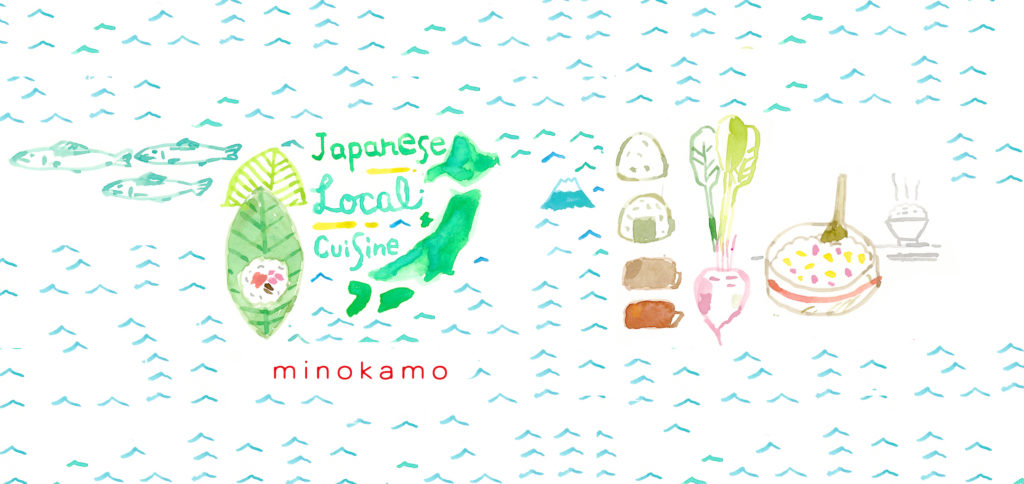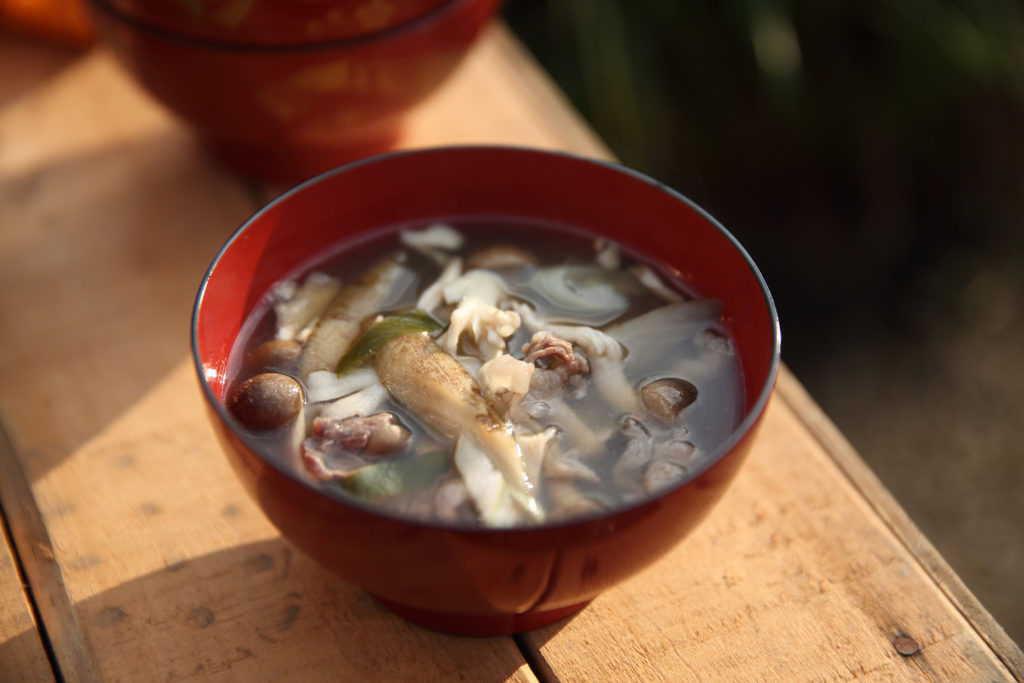
Ingredients (serves 6–8)
About 7 satoimo / taro root (medium)
200 g thinly sliced beef / komagire scraps
1 gobo / burdock root
1 konnyaku / konjac jelly
1 pack shimeji mushroom
1 pack maitake mushroom
1 negi / Welsh onion
1,000 cc water
100 cc sake
100 cc soy sauce
100 cc mirin (or 2 tbsp sugar)
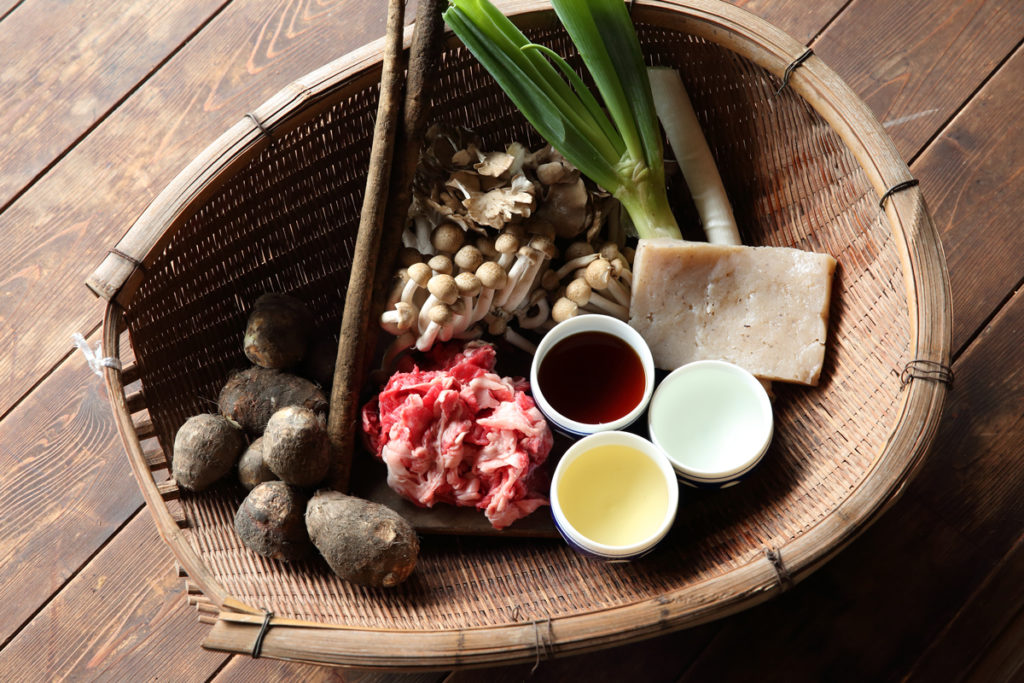
How to Make
1. Prepare the taro root. Use the knife blade to scrape off the skin. Alternatively, if the skin is too tough, peel it off completely. Cut into bite-size pieces. Place in boiling water, bring to a boil again, and simmer for about 30 seconds. Drain in a basket and rinse under running water to remove the sliminess.
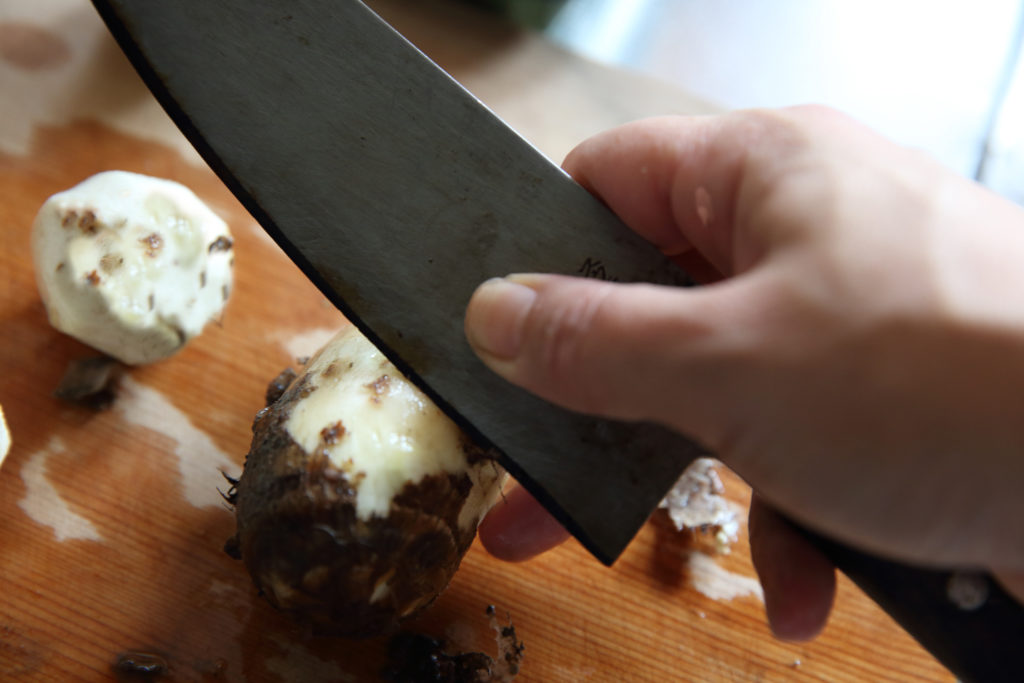
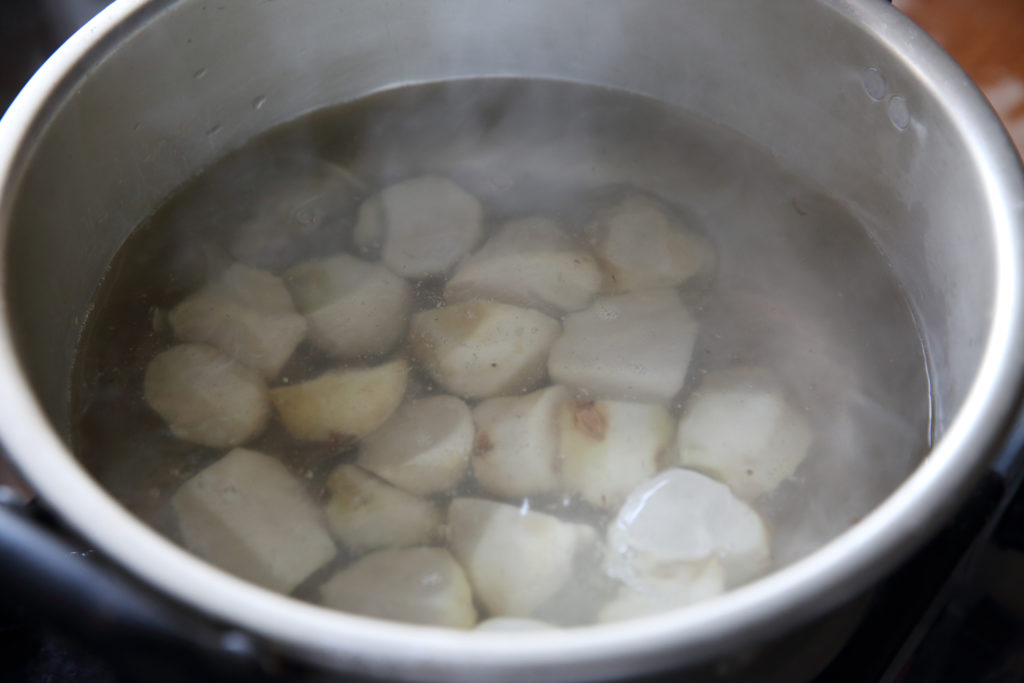
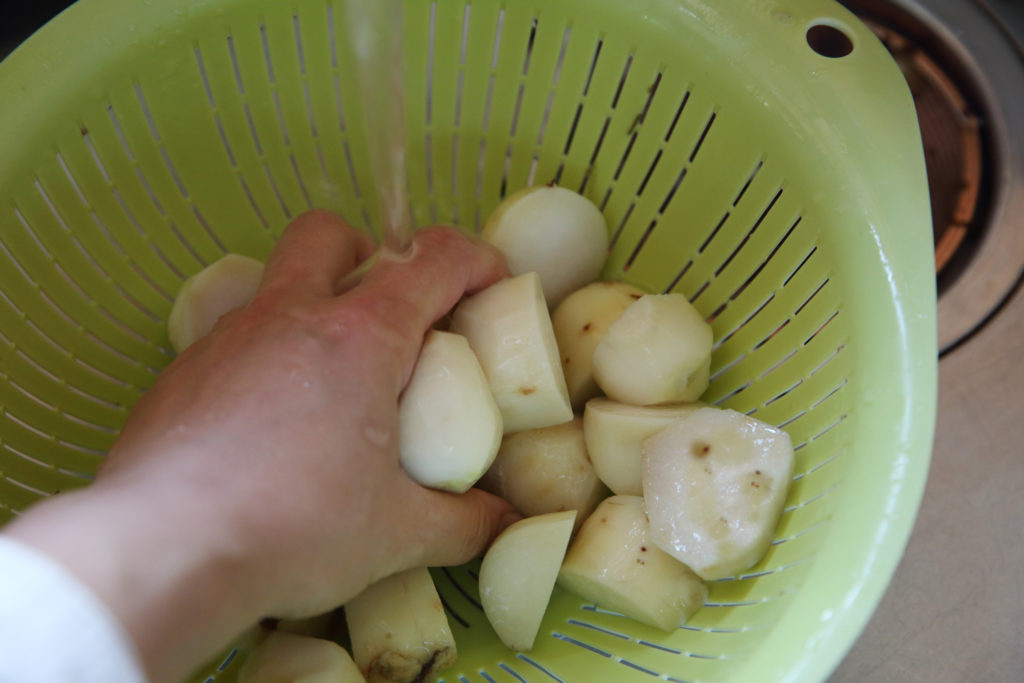
2. Prepare the other ingredients. Shave off thick slices of the burdock root. Use the hands or a spoon to “tear” the konjac jelly into bite-size pieces. Chop the Welsh onion diagonally, keeping the leaves and the stalks separate. Remove the base of the shimeji and maitake mushrooms, and use the hands to separate the stems.
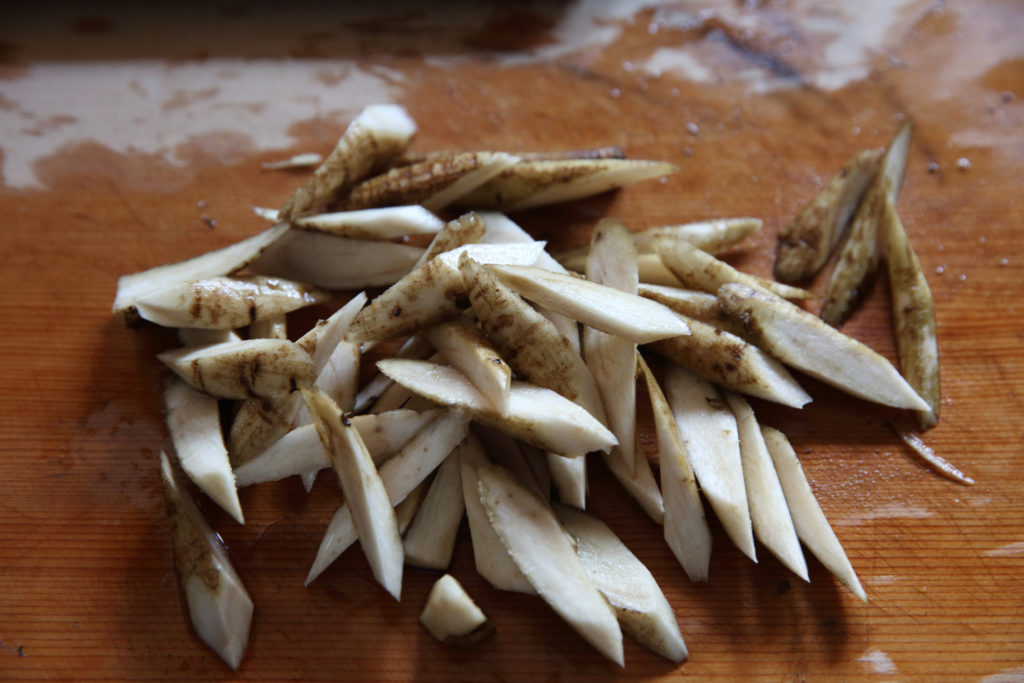
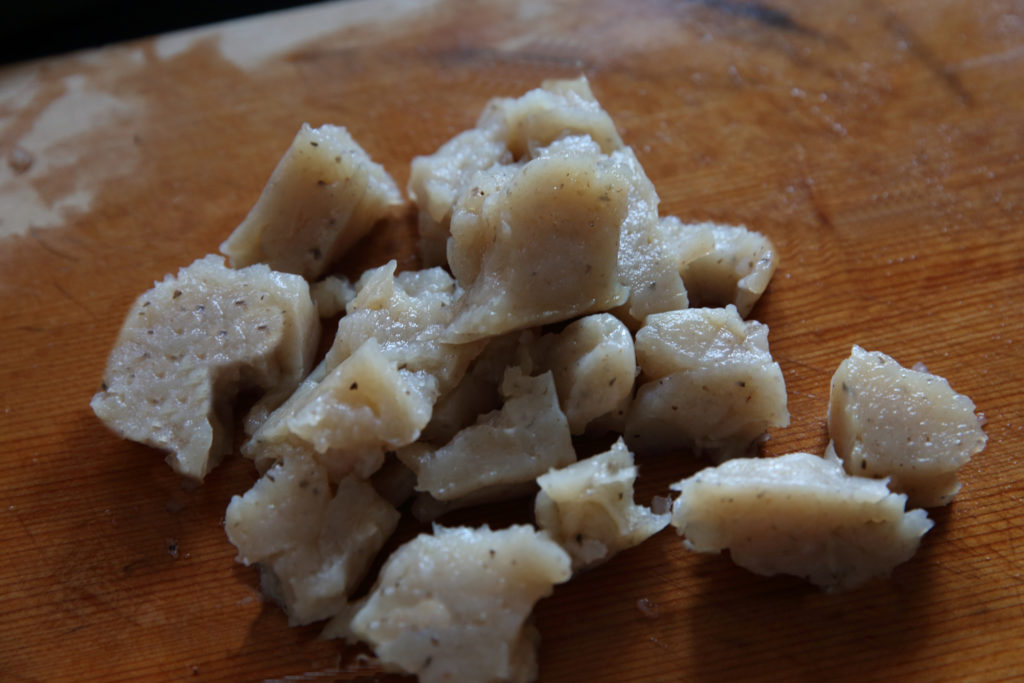
3. Heat the water, taro root, burdock root, konjac jelly, leaves of the Welsh onion, and place 50 g of beef in a pot. Bring to a boil, reduce the heat to medium, and cook while thoroughly removing the scum that floats to the top. When the ingredients are cooked, add the remaining beef, shimeji and maitake mushrooms, stalks of the Welsh onion, and soy sauce. Taste the soup and adjust with more soy sauce if needed. Imoni tastes even better on the second day, after the flavor has settled.
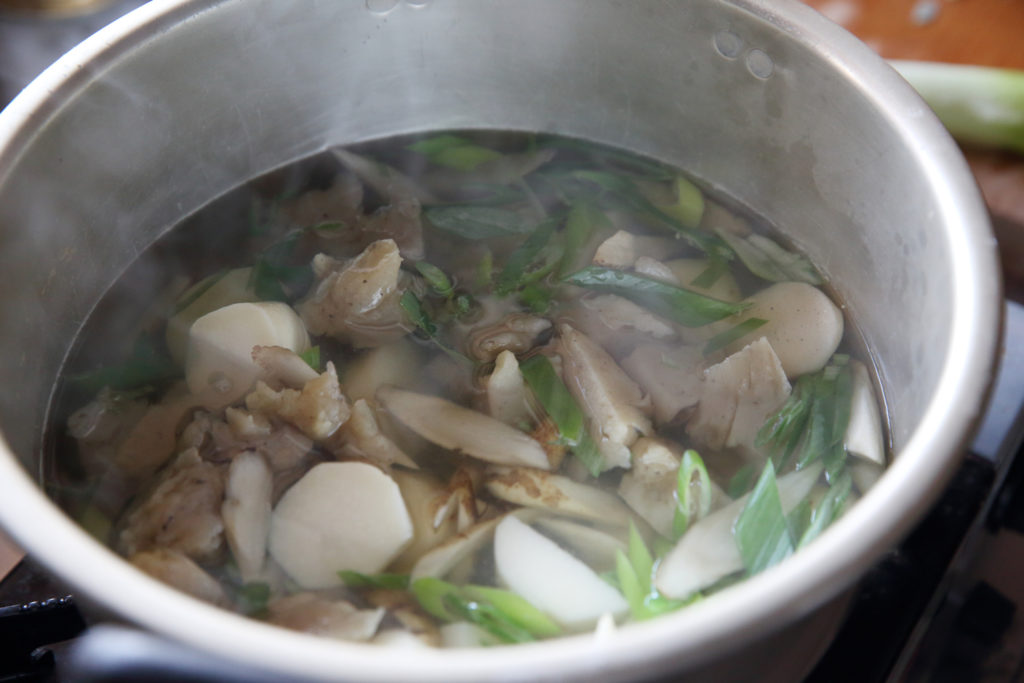
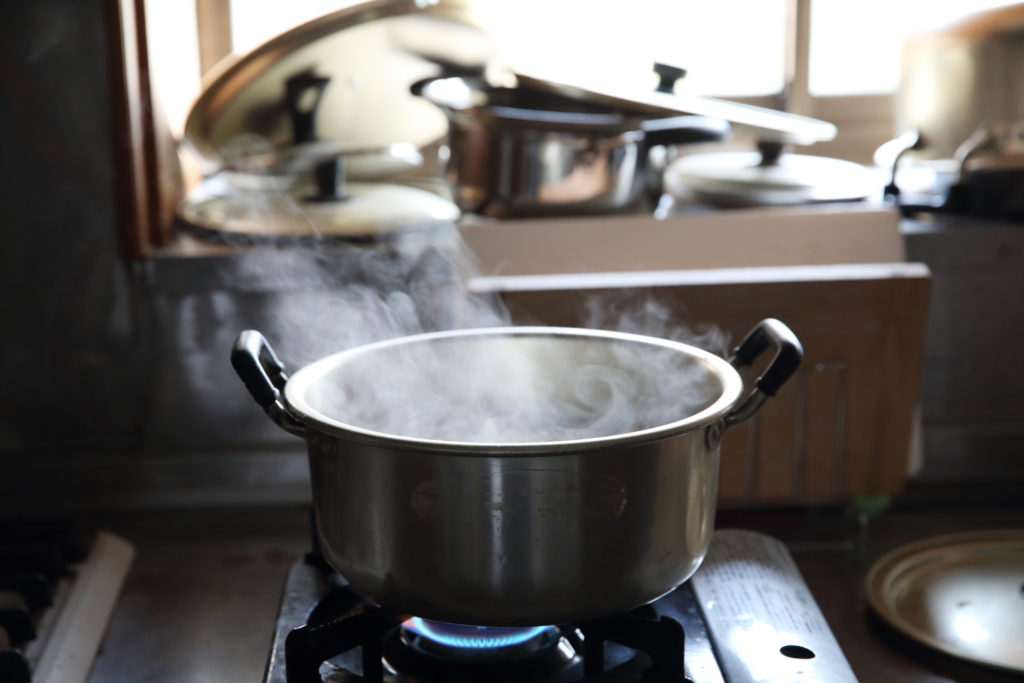
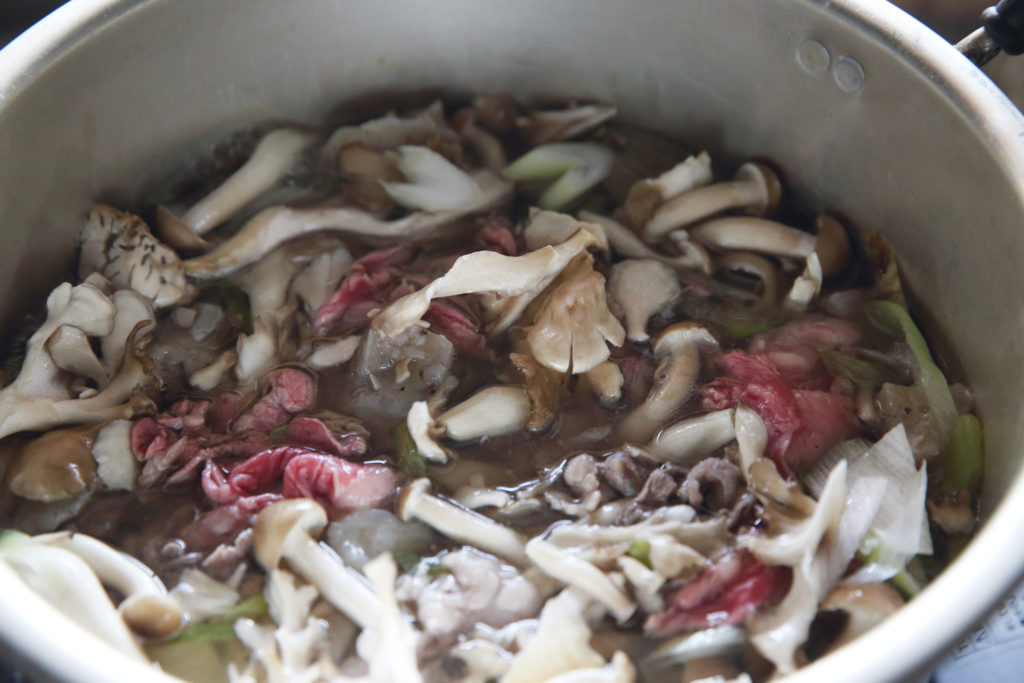
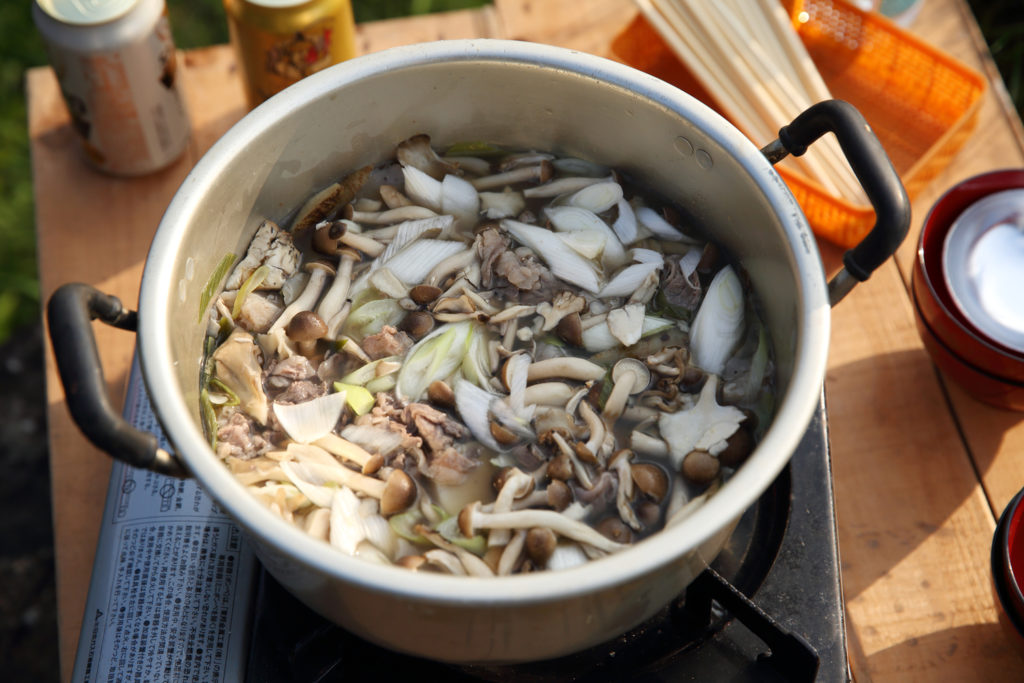
Imoni is an outdoor hot pot originating in Yamagata Prefecture. The name refers to both the dish and the riverside parties thrown by groups of workplace buddies, friends, children, and relatives to celebrate the autumn harvest of satoimo (taro). I learned this recipe from the residents of Yamanaka Town, lying along the Mogami River. The town is said to be the birthplace of Imoni. It has an iconic old pine tree on the riverbank called Nabekakematsu, which served as a resting spot for boatmen, for its branches were perfect for hanging their pots and cooking large servings of the original imoni. Today, when imoni season arrives, the stores that sell the ingredients also rent out large pots and picnic blankets free of charge.
The main ingredients are taro root and beef. The secret to a tasty pot is to choose the most budget-friendly meat with plenty of fat. Also, because taro root is slimy beyond belief, it’s best to parboil the bite-size pieces and rinse them under running water when following this recipe indoors. There are numerous variations of imoni, but the recipes can be divided into two main groups: inland towns including Yamanaka feature beef and soy sauce, and coastal towns such as Shonai use pork in a miso-flavored soup. The last serving of a pot of imoni is typically arranged into curry udon noodles so as to finish every last drop of the soup. At first, I wondered why imoni meant a big party, but I figured that the Yamagata tradition is to savor the autumn together in preparation for the long winter ahead. As I cooked the pot for this column, I decided I want to enjoy it al fresco too. With every delicious bite, I appreciated the cozy Yamagata culture of sharing pots of imoni and enjoying one another’s company.
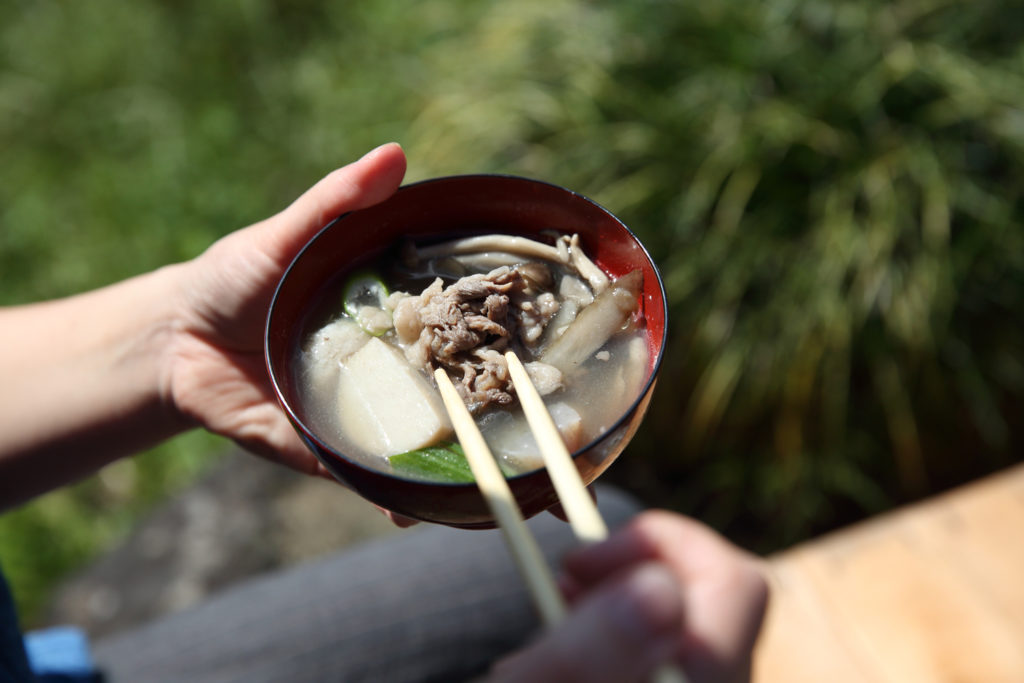
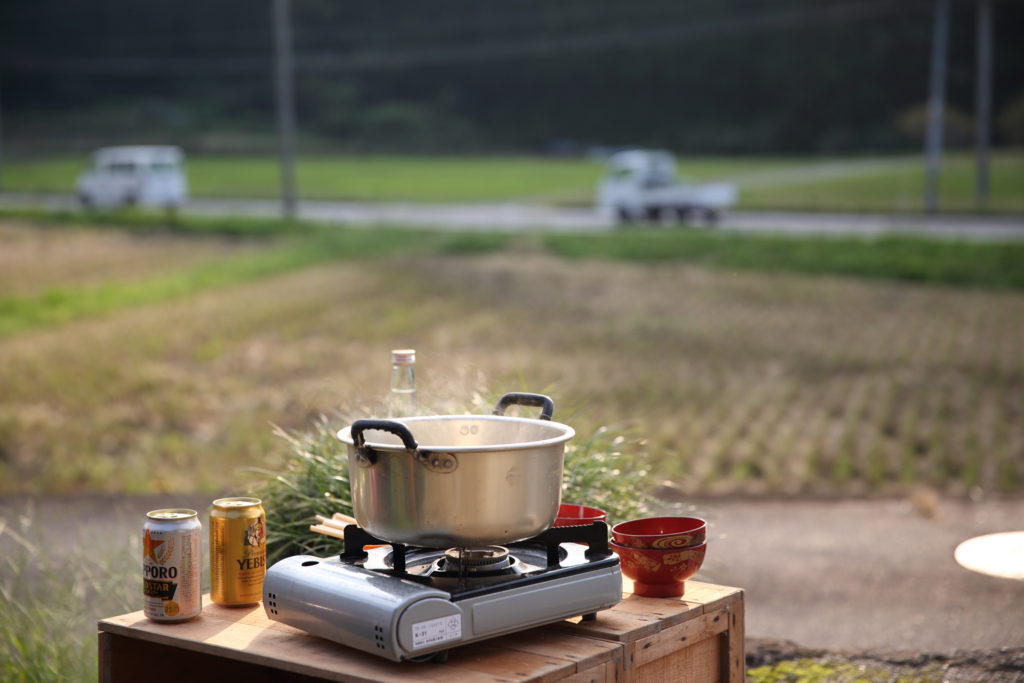
minokamo | Cookery expert / Photographer
Gifu Prefecture native minokamo’s culinary adventures were inspired by her fond childhood memories of cooking with her grandmother. She researches, writes about, and arranges regional dishes that capture, through their preparation and presentation, sensory enjoyments inspired by local climate, history, and lifestyles. Her book, Ryori tabi kara tadaima is a collection of recipes from minokamo’s visits to homes up and down Japan.
